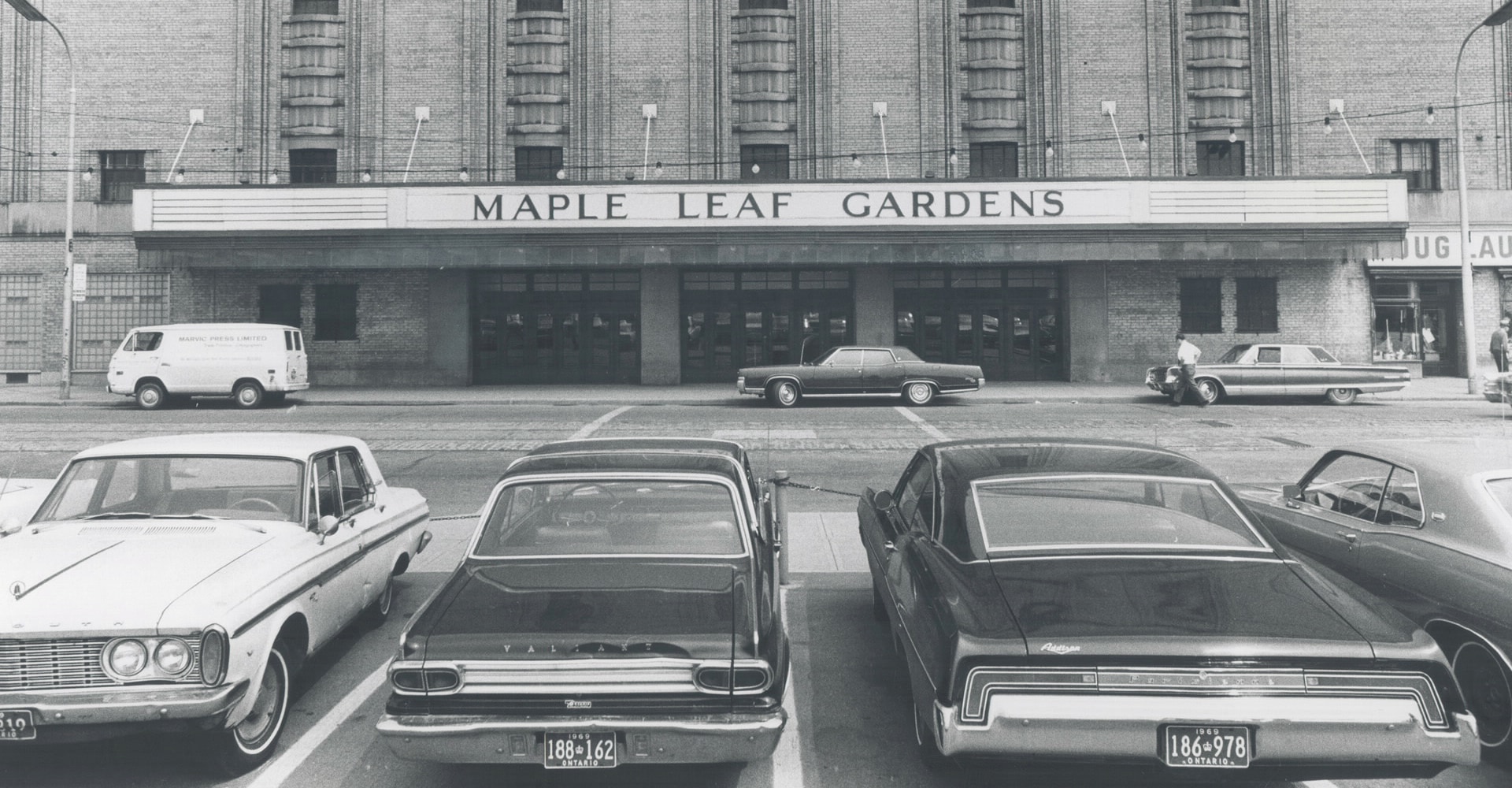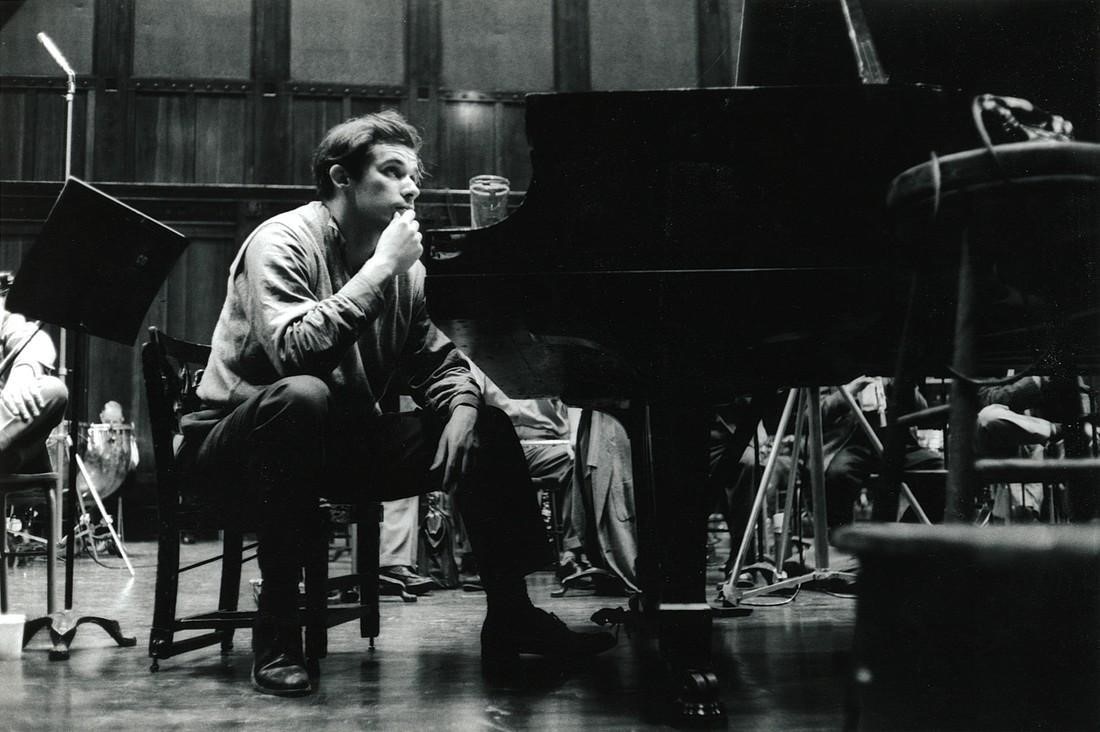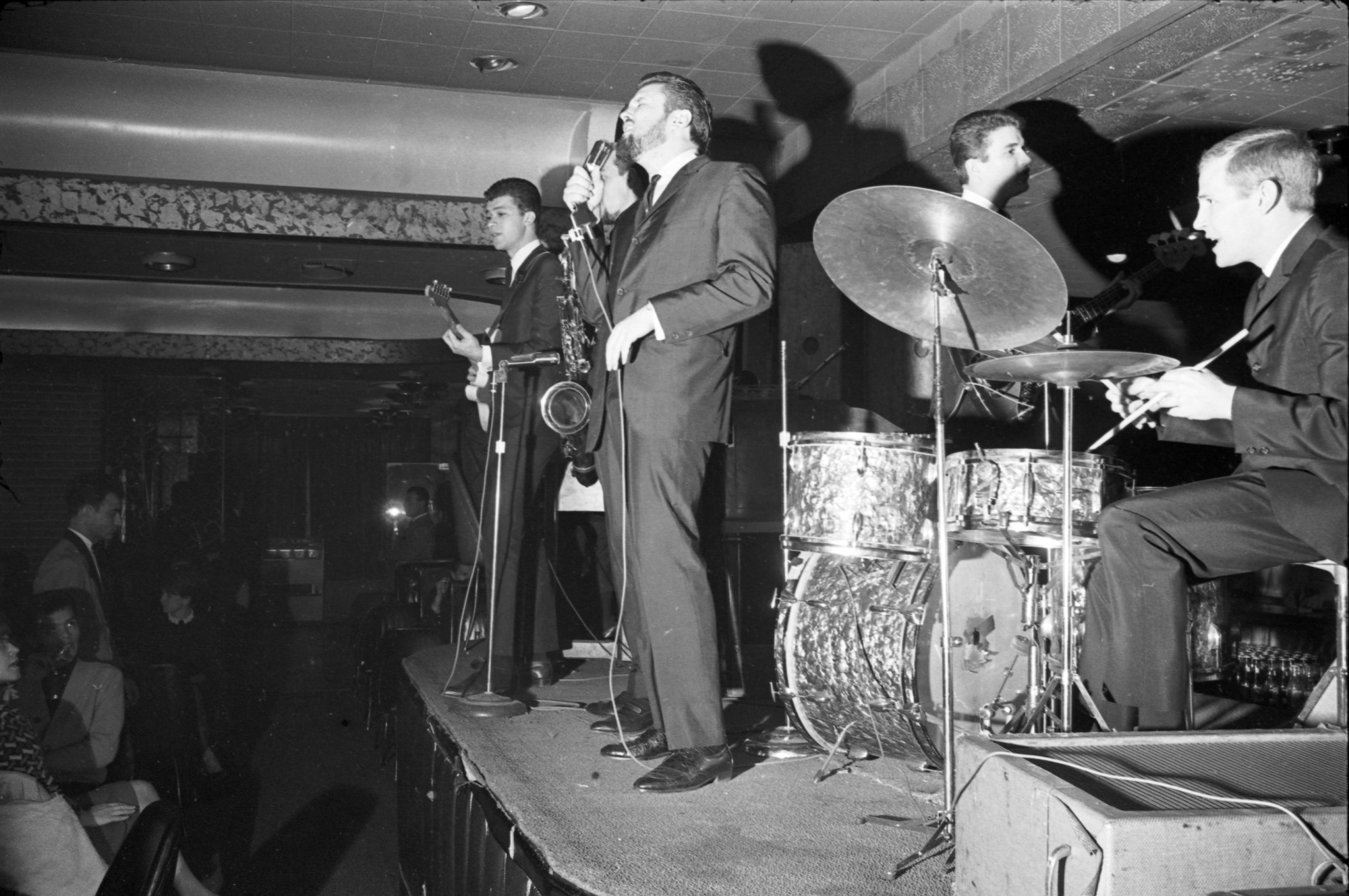
From its opening in 1894 until the 1920s, Massey Hall was the only purpose-built music hall in Canada. Today, it is the oldest continuously operating theatre in North America.
Countless artists across nearly every genre have performed at Massey. The Hall possesses remarkable acoustics, beloved by artists and audiences alike. It has been said that a word whispered onstage can be heard from the furthest balcony seat.
This online exhibition uses third-party applications including Spotify and YouTube. Check with your organization’s web administrator if you are unable to access content from these channels in the exhibition.
Listen: A Massey Hall Playlist
Massey Hall has been the location of numerous internationally famous recordings, from jazz classics by the Charlie Parker Quintet to Canadian rock legends Blue Rodeo.
Listen to a collection of some of the diverse music styles and performers that Massey Hall has hosted over the years. Each song on this playlist was recorded live at the famous Toronto venue.
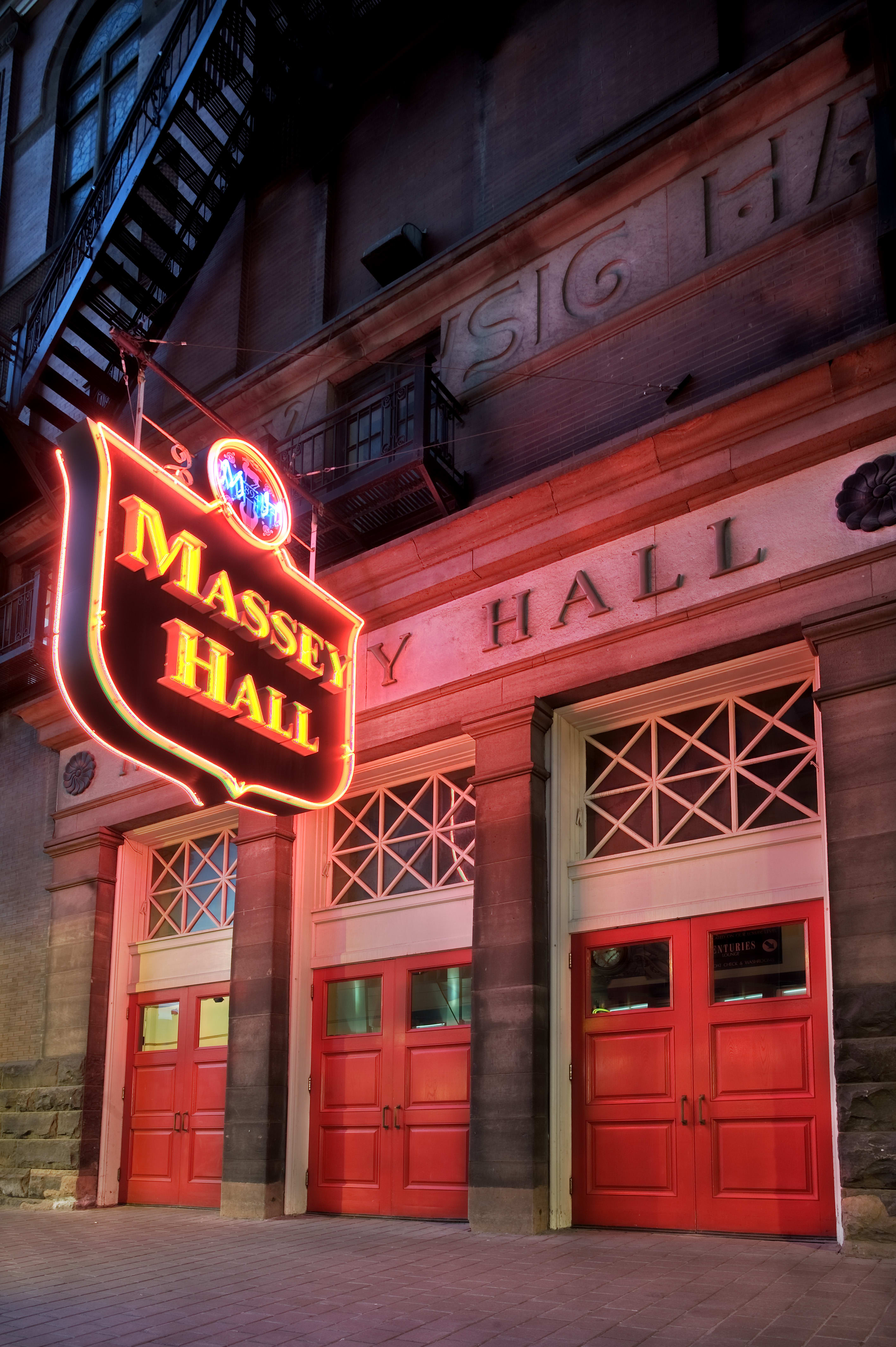
The famous neon lights of Massey Hall above its iconic red doors.
Courtesy of Massey Hall-Roy Thomson Hall
Hart Massey
Today known as Massey Hall, the venue owes its existence to industrialist and philanthropist Hart Massey (1823–1896). The hall was built to honour Massey's eldest son, Charles Albert, a musician, who died in 1884 from typhoid. Before it was built, musicians in Toronto had no venue to play in apart from churches or other religious buildings.
Massey provided $100,000 (more than $2 million dollars today) for the building, which was first known as Massey Music Hall, and gifted it to the citizens of Toronto.
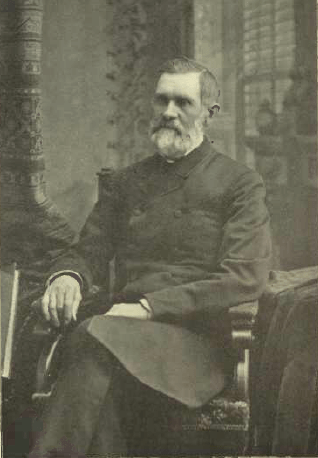
Noted industrialist Hart Massey commissioned several Toronto buildings, including Massey College at the University of Toronto.
Photo by J.H. Beers & Co.
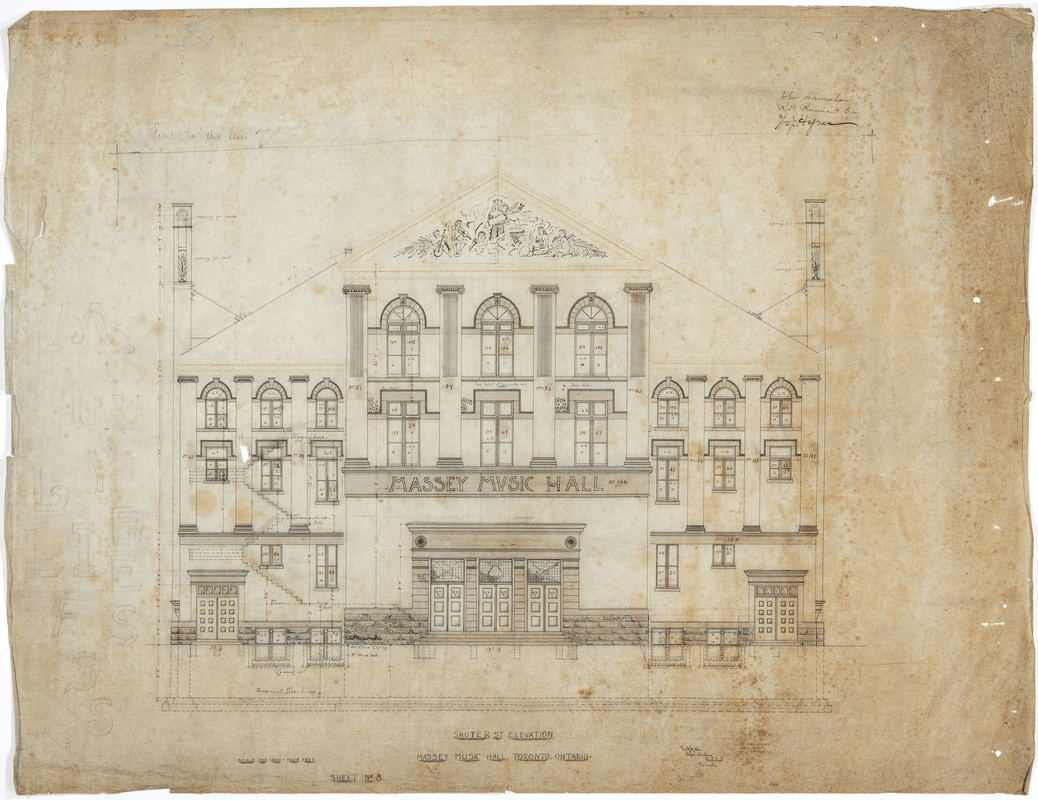
An architectural drawing of Massey Hall’s exterior from the perspective of Shuter Street. These drawings date to the opening of the Hall in 1894.
Courtesy of the Massey Hall Archives
Opening Night
Built in a little over a year, the Massey family collaborated with architect Sidney R. Badgley on the look and feel of the venue. Massey Music Hall opened in June 1894 with a performance of Handel’s Messiah to a sold-out crowd.
With stained-glass windows, private boxes, and tiered onstage seating, the design of Massey Music Hall may seem highly decorated to modern eyes. But the Hall was considered sparse in terms of ornate Victorian aesthetics.
Everything is severely plain, but all in good taste. Money has been saved from the decoration and applied to securing better and more
comfortable seats and wide, commodious aisles...But in spite of its plainness, the hall possesses
—Evening Star, June 15, 1894
a quiet, magnificent beauty...
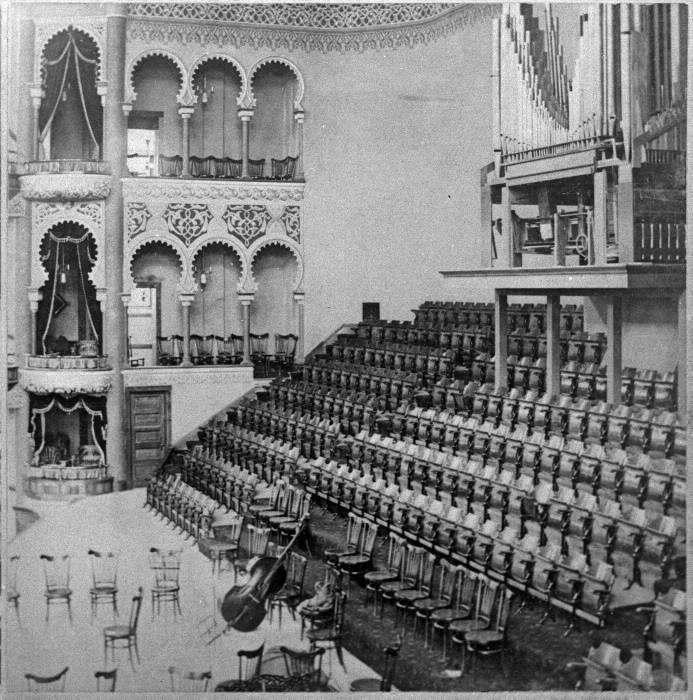
A peek at the original interior for Massey Hall shows the inspiration the architects took from Moorish design, incorporating horseshoe arches decorating the boxes and hallways.
Photo by B. W. Kilburn,-Littleton, N.H. Courtesy of Toronto Reference Library
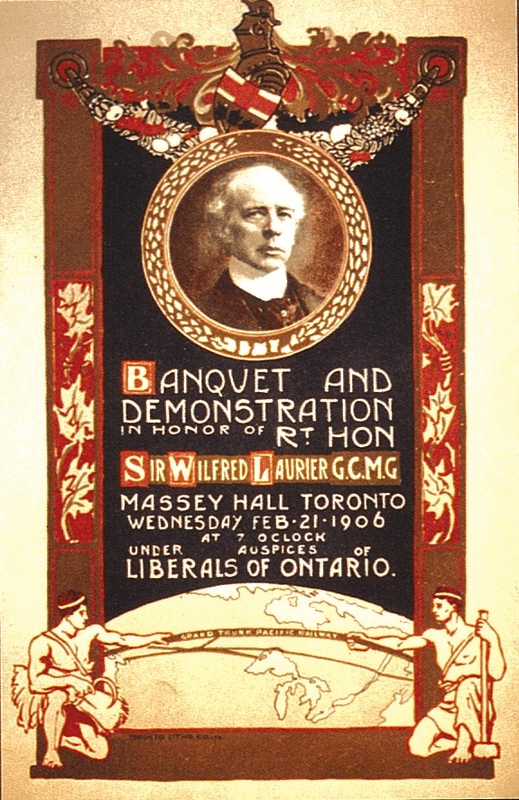
Program advertising a 1906 event at Massey Hall hosted by the Ontario Liberal Party to honour then Prime Minister Sir Wilfrid Laurier. Laurier famously said that “the 20th century will belong to Canada”. Do you think this was true? Courtesy of Massey Hall
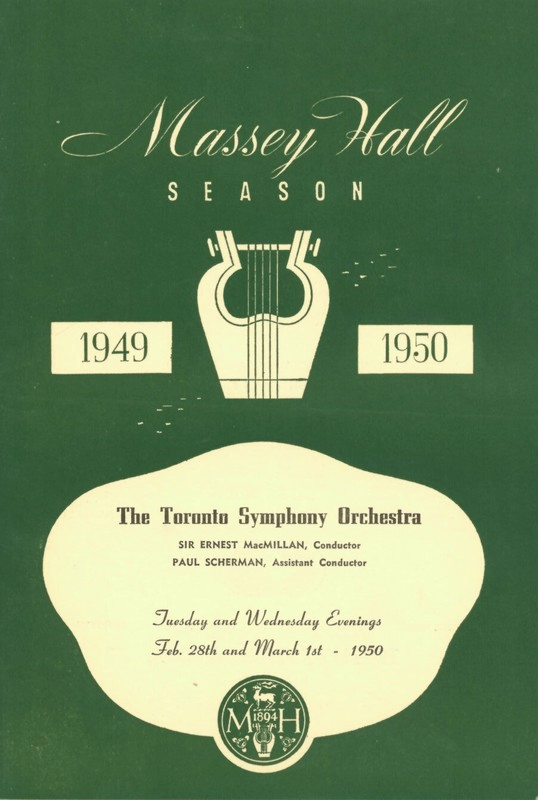
Program cover for the 1949-50 Toronto Symphony Orchestra season, conducted by Sir Ernest MacMillan. MacMillan, who introduced conservative Toronto audiences to the modern sounds of twentieth-century composers, first performed at Massey as a 10-year-old boy in 1904. Courtesy of Massey Hall
Fiery Speeches
With seating for 3,500, the Hall was a premier venue for public speeches and rallies. Future British Prime Minister Winston Churchill spoke at the Hall as early as 1900, African-American educator and presidential advisor Booker T. Washington gave a visiting lecture in 1902.
In 1919, Canadian suffragist Nellie McClung led a passionate rally at the Hall on the need for equal rights for women.
But Massey Hall has also welcomed the world’s biggest musical talent. The Toronto Mendelssohn Choir, still in existence today, was formed in 1894 to celebrate the opening of Massey Hall. In 1920, international opera star Enrico Caruso performed on the Hall’s famous fire escapes for an overflow crowd. From 1923 until 1982, it was home to the New Symphony Orchestra (later the Toronto Symphony Orchestra).
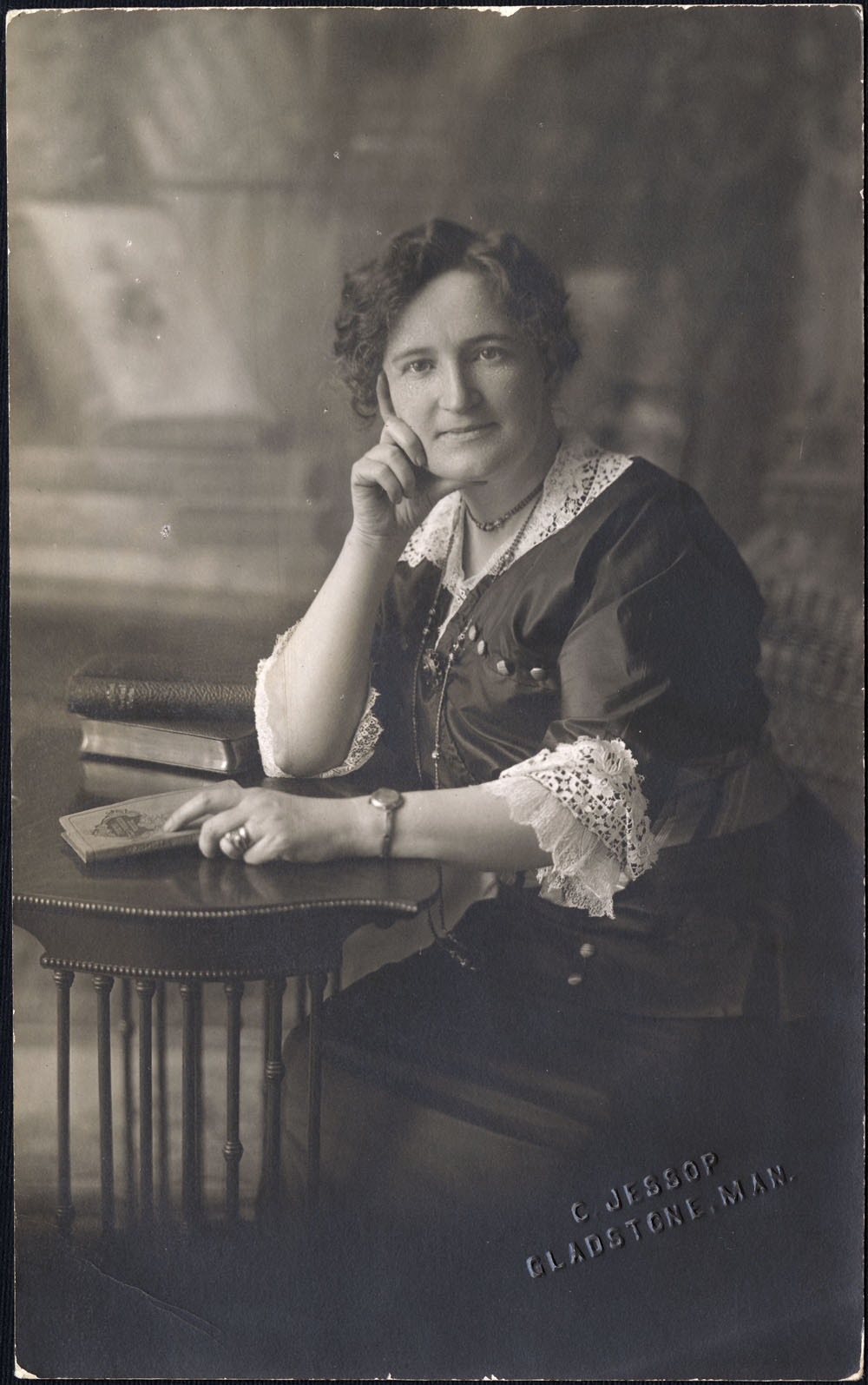
Courtesy of Cyril Jessop, Library and Archives Canada, Acc. no. 1966-094, PA-030212
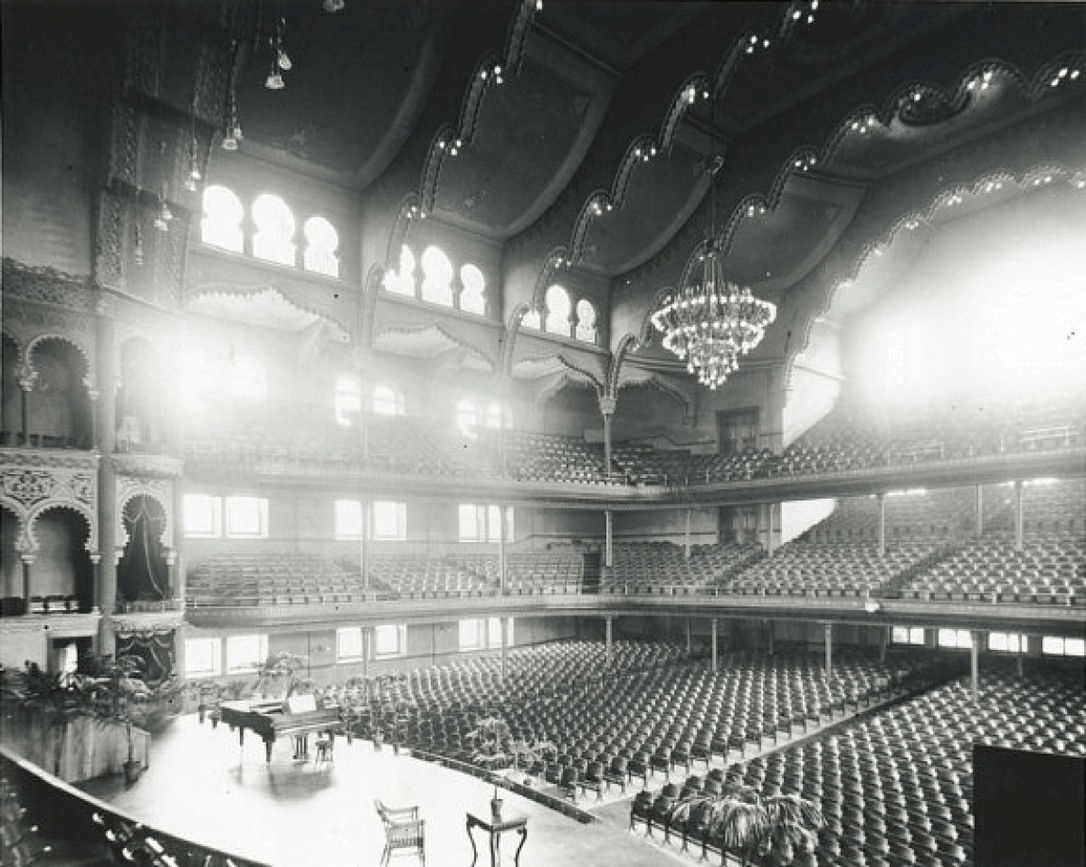
A view of the interior of Massey Hall circa 1894.
Courtesy of the Massey Hall Archives
The Lost Windows
The grand stained-glass windows seen in this photograph were part of the Hall’s original decoration and beloved by audiences. Although the windows allowed natural light to filter into the space, unfortunately, they also carried sound in from the streets outdoors.
When Toronto transitioned from horses and buggies to cars and trucks in the early twentieth century, the windows were boarded over to keep the Hall quiet for performances.
As part of Massey Hall’s extensive renovations beginning in 2018, these windows were uncovered for the first time in over 50 years.
Piano Legends
In the late 1940s, two Canadian piano legends made their Massey Hall debuts. Glenn Gould performed with the Toronto Conservatory Symphony Orchestra when he was barely a teenager. Early reviews of Gould’s playing hinted at the virtuoso he’d become:
The other and quite astounding feature of the concert, was the artistic playing of a 14-year-old Toronto boy, Glenn Gould, pianist...
His is not a heavy tone, but delicacy of phrasing and timing give it clear carrying power.
—Pearl McCarthy, The Globe and Mail, January 15, 1947
Meanwhile, Canadian jazz pianist Oscar Peterson had one of his first performances at Massey Hall with his trio in March 1947. Peterson’s trio made regular appearances at the Hall during the 1950s, performing alongside other jazz legends such as Ella Fitzgerald, Gene Krupa, and Dizzie Gillespie.
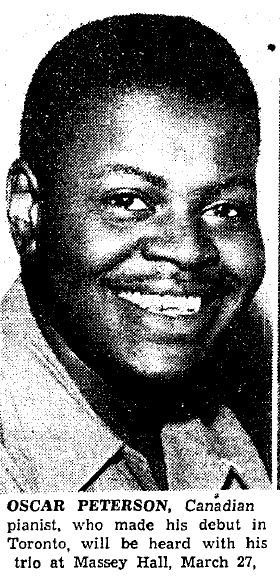
This online exhibition uses third-party applications including Spotify and YouTube. Check with your organization’s web administrator if you are unable to access content from these channels in the exhibition.
Listen: Jazz At Massey Hall
Take a listen to the most legendary concert in Massey’s 125-year history: Jazz at Massey Hall, performed on May 15, 1953.
Together, for the first and only time, titans of jazz Dizzy Gillespie, Charlie Parker, Bud Powell, Max Roach, and Charles Mingus graced the stage to play a seven-song, 46-minute set.
The concert came about because of the work of the New Jazz Society, a group of young, go-get-’em fans of the genre, some still in high school. The Society signed each of the performers individually to play the show, resulting in the unusual “Jazz Festival” billing.
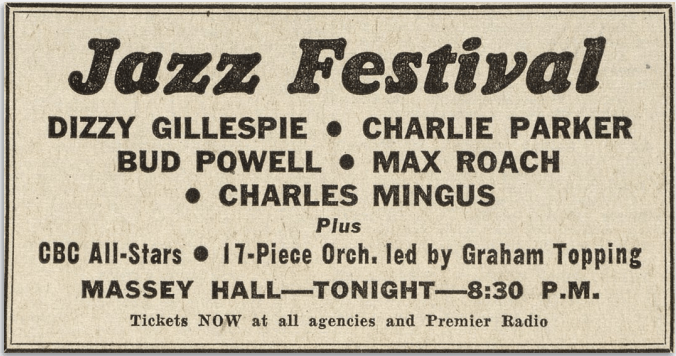
Massey Goes Rock
As music trends changed in the latter half of the twentieth century, Massey Hall saw many rock legends perform on its stage. Bands and musicians took advantage of the venue’s famous acoustics to record live albums.
This online exhibition uses third-party applications including Spotify and YouTube. Check with your organization’s web administrator if you are unable to access content from these channels in the exhibition.
Listen: Live From Massey Hall
On this track, you can hear an early version of “Old Man”, one of Neil Young’s most famous songs. Young was born in Toronto in 1945.
The song was first released on Young’s award-winning 1972 album Harvest. But more a full year earlier, Toronto audiences enjoyed a sneak peek of the song during Young's Massey Hall concert in January 1971.
Young’s set that night at Massey Hall was intended to be released as a live album, but the recording of the performance sat on the shelf for more than 30 years. Live at Massey Hall 1971 was released only in 2007, finally bringing to light this early version of one of Young’s classic songs.
Rush at Massey
In 1976, rock band Rush recorded its first live album, All The World’s A Stage, over three nights in June in Massey Hall. The album became the band’s first Top 40 charting album in the US.
This online exhibition uses third-party applications including Spotify and YouTube. Check with your organization’s web administrator if you are unable to access content from these channels in the exhibition.

Watch Rush band member Geddy Lee describe his experience of attending concerts at Massey Hall and what it meant to the band to play Toronto's premiere venue for the first time. Courtesy of CitySonic TV; Directed by Bruce McDonald, 2009. Please note: this third-party video does not contain closed captions.
View Transcript[Music]
LEE: First of all, every time you play home town, it's different than any other show.
Announcer: I want you to please welcome home: RUSH.
[Music]
LEE: We were at Massey Hall. We were on the stage at the classic music hall of Toronto. It's hard to know what the objective world view of Massey Hall is, but I would think it's our version of the Royal Albert Hall or something like that. I remember him coming here to see the bands that I loved. My favorite trio Cream were going to play Toronto, and I was so excited.
Somehow or another, I could not get any of my pals as excited about it as I was. So I said, well, I'm going down to Massey Hall. In those days, there was no Ticket Master. None of that. Went down to the box office, and that was exciting. So I bought one ticket, I was sitting right up by that pole.
And you know, in those days when your heroes came on stage, they didn't really, didn't even walk. They kind of floated onto the stage. I was just, you know, staring especially at Jack Bruce because he was one of my first bass playing heroes.
And I just couldn't get my eyes off his whole routine and how he sang, played the bass. And I remember there was only two microphones on the stage and they were going through the PA system of Massey Hall instead of having their own PA system. And so you've got this distorted voice of Jack Bruce and Eric Clapton singing while they were just rocking the joint.
Well, Massey Hall was the pinnacle prestige gig to us. To me, this building represented musical success. Yeah, yeah, exactly. Virtuosity. Yeah. It was a prestige building. So the idea of playing Massey Hall was the unattainable dream of every young player because of the fact that the rep for this place was musical.
[Guitar Music]
The first time we played, I think we opened here in '75 for Nazareth, and then we played a gig I think later that year after Fly By Night had come off, come out, headlining it, which was. Just unthinkable.
Suddenly there were all these live albums being made. Humble Pie had put out this big double record, live album. It was this huge success, and we said, well, let's do a live album, because that seems to be the thing d'jour, right?
So we did three nights here. We tried to recreate the feeling of being at the Rush show. We'd never done a live album before, so we really did not know what we were doing. Crazy, crazy three nights here. Really exciting. Totally nerve wracking. We were not to be dealt with. We were all completely anxious.
[Rush music]
To this day, a lot of fans think it's their favorite Rush live album, and it's certainly the most raw album we've ever made. When you live in a city, those buildings are iconic to you. You know, Massey Hall is a very, very significant building in my life in terms of the music that I grew up on. And coming here to see the bands that I loved and also in my career, it was a pivotal moment. The day we got to play this building.
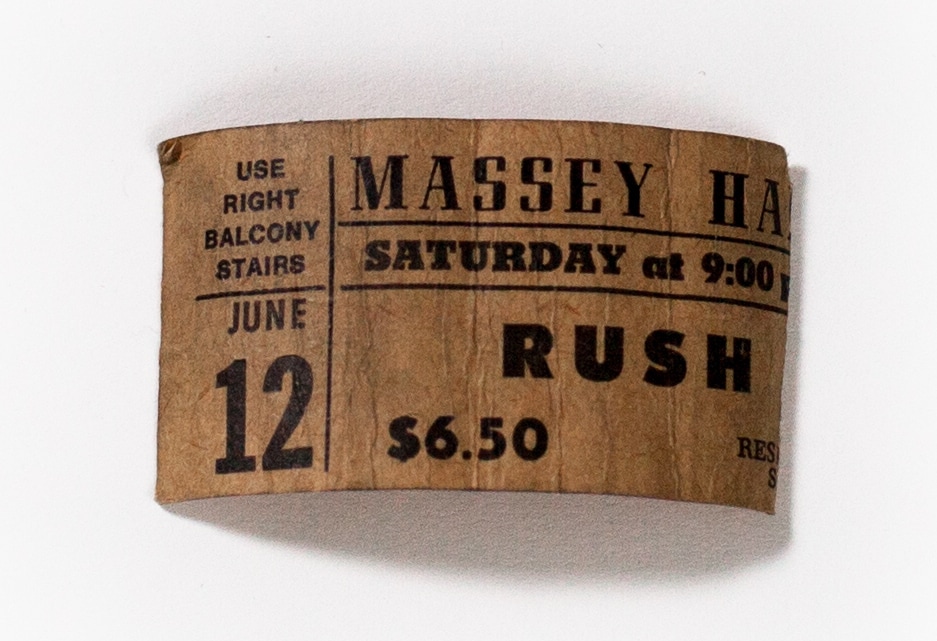
While cleaning up backstage in late 2015, Massey Hall staff unearthed this vital piece of CanRock history: a ticket stub from Rush’s live recording of “All the World’s a Stage” at Massey Hall in 1976.
Photo by Andrew Terwissen. Courtesy of Massey Hall-Roy Thomson Hall Archive
Massey Hall has played a major role in my life — as a teenager when I saw the bands I loved [...] it remains Canada’s classic music hall.
— Geddy Lee, Rush
This online exhibition uses third-party applications that may not be compatible with your current version of browser. Check with your organization’s web administrator if you are unable to access content from these channels in the exhibition, or try to access this webpage from another browser.
Keyboard controls: Use arrow keys to rotate the object and page up/page down to zoom.
This usher’s jacket was worn by Tema Smith, who was an usher at Massey Hall for over a decade and remembers fondly welcoming music fans of all stripes into the venue. Today, she runs a Facebook group for former ushers, with over 200 members.
Massey Hall Usher Jacket
Anyone who has attended a performance at Massey Hall may recognize this iconic red usher’s jacket. Ushers, responsible for showing audience members to their seats and to distribute programs, are an integral part of any Massey Hall experience. The striking red colour helped to identify ushers to audience members and performers within the large space of the Hall.
Most ushers love music and many have been musicians themselves. Among them, band members of the Lowest of the Low and the Cowboy Junkies have gone from wearing the usher’s jacket to being on stage.
Listen: Dave Bidini at Massey Hall
Musician and writer Dave Bidini has played on Massey Hall’s stage and sat in its audience more times than he can count. Listen to him recall some of his favourite shows, both as a founding member of world-famous indie rock band Rheostatics and as a prolific champion of Canada’s musical talent.
In 2016, Rheostatics performed at a special presentation of the concert and film series, "Live at Massey Hall." Over 45 shows were presented and recorded for the series prior to the venue’s temporary closing in 2018. You can screen them all at www.liveatmasseyhall.com.
This online exhibition uses third-party applications including Spotify and YouTube. Check with your organization’s web administrator if you are unable to access content from these channels in the exhibition.

Recorded in 2019 for Heritage Toronto.
View TranscriptDave Bidini: I'm Dave Bidini from the Rheostatics and next year will be our 40th anniversary as a band. And….yeah. Still have my guitar strapped to my back.
And Massey Hall, we got a chance to play a couple of times. Our ill-fated farewell show. I say ill-fated because we returned to play it eight years afterwards, but I remember the last time we played it. I remember just after one song, just reminding myself to kind of pause and stop and listen to the crowd basically.
And we played this one song called “A Fan letter to Michael Jackson” We had a big band anyways for that show. We had six people in the band for that show and we brought three singers on to perform with us. So we had nine on stage.
And we created this real, this incredible storm of sound over the last bit of that song, which is kind of just a….it's a meditative jam that kind of cycles over two chords. And we really kind of skyed it at the end.
We really pushed the song to its limits and then we kind of stopped dead. And the sound that came back to me from that crowd is something I'll never forget.
You know, it was…it was it was beautiful. And it sounded beautiful in that room and I've never had an experience like that.
The sound was like a cross between like people kind of screaming with joy. That's really what it was like. Two thousand schoolchildren. So a very beautiful and melodic and and….and almost, you know bird-like…sound.
What's Next
In 2018, Massey Hall closed its iconic red doors to complete the largest revitalization in the venue’s history. The project will restore and renew both the interior and exterior of Massey Hall, improve patron amenities and accessibility, open two new music venues, and see the return of the original, 125 year-old stained glass windows.
Shortly before it closed, the Hall held a night to celebrate its 124-year history, featuring performances by some of the artists who had graced its stage: Jim Cuddy of Blue Rodeo, Sarah Harmer, Buffy Sainte-Marie, and Whitehorse. In honour of the evening’s significance, tickets only cost $18.94, a nod to the year the Hall opened.
As a final send-off, Gordon Lightfoot, who holds the record for most appearances at Massey (more than 160!), played two sold-out shows, including a Canada Day finale, before the doors closed.
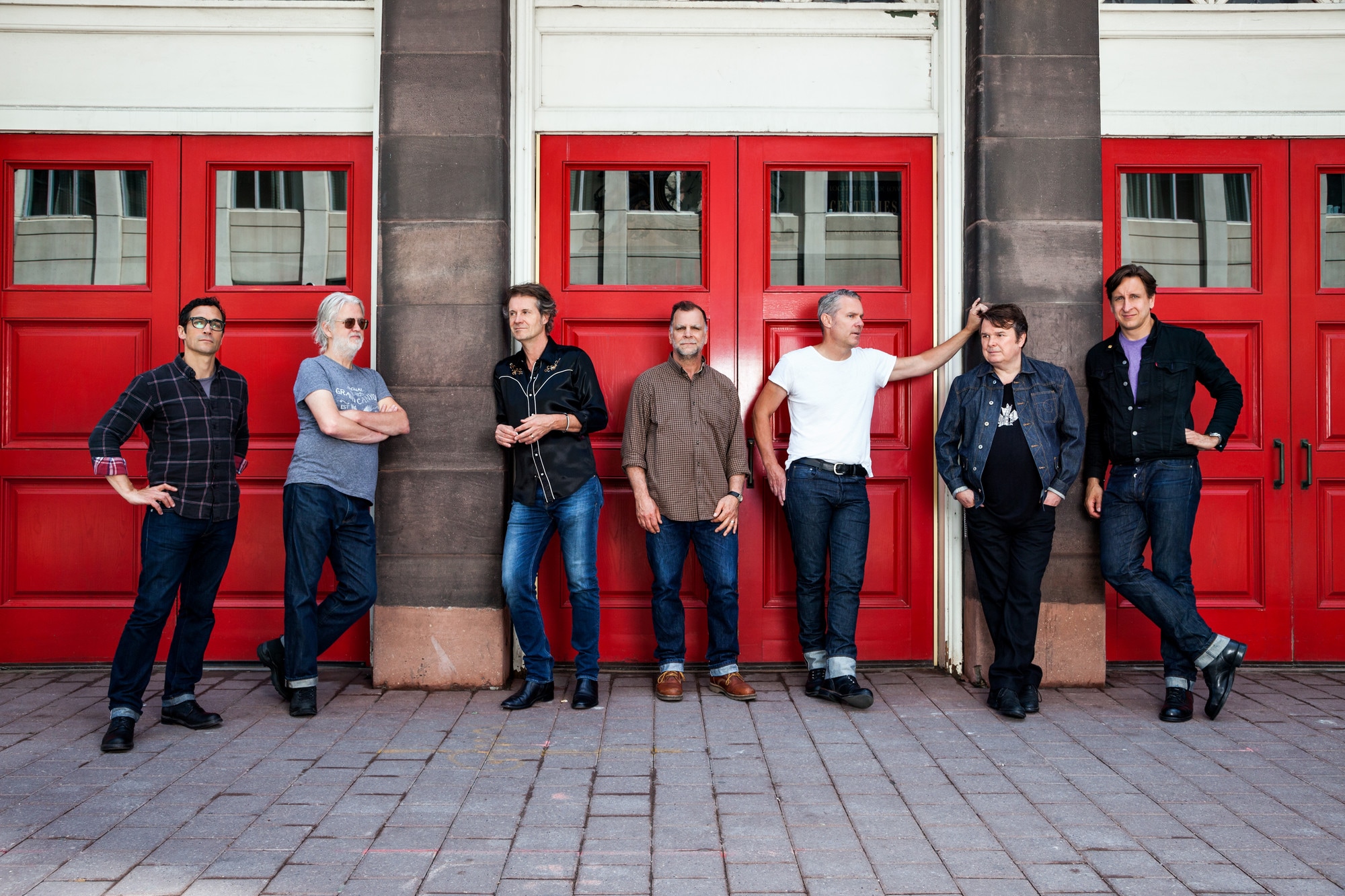
Members of Canadian rock band Blue Rodeo stand in front of Massey Hall’s iconic red doors. Like many before them, the band used the Hall to record their 2015 album, “Live at Massey Hall”.
Photo by Heather Pollock, 2015
Leading The Way
For much of its first 125 years, Massey Hall was a community hub as much as it was a concert theatre. In addition to local performing groups, generations of school children have stood on Massey’s historic stage.
Although it is best known as a space for marquee acts, Massey Hall’s commitment to education and the future generation never waned: In 1999, it started the Share the Music program, which has provided more than 26,000 free tickets to students and chaperones to events that span the diverse genres of the venue’s programming.
In 2017, the Corporation began to expand its commitment to education and community engagement, undergoing a strategic planning process and beginning more than 10 new programs. Now the spirit of Massey Hall can be felt through activities in the Hall, in schools, and through partnerships with community organizations.
Did you perform or see a show at Massey as a student? Tell us about it on social media at @heritagetoronto.
Dive Deeper
Massey Hall, Shine A Light, Volume I, March 2017. (e-publication).

